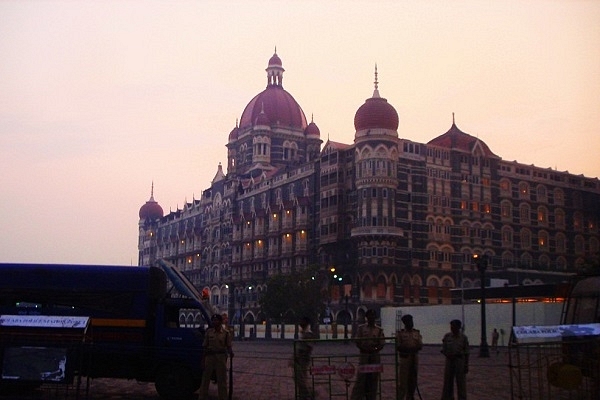Insta
While China Shields Terrorist Masood Azhar, It Calls Pakistan Perpetrated 26/11 ‘Most Notorious Terror Attack’

Taj Mahal Hotel in Mumbai, one of sites of the 2008 terrorist attacks (Wikimedia Commons)
In what many view as an unusual acknowledgement, China on Monday (18 March) termed the 2008 Mumbai attacks as one of “the most notorious terrorist attacks,” reports Xinhua.
The attacks were carried out by Pakistan-based terrorist outfit Lashkar-e-Taiba (LeT). LeT is one of the largest and most active Islamist militant organisations in South Asia, reportedly operating with support from the Pakistani state. It was founded in 1987 by Hafiz Saeed.
The white paper titled “The Fight Against Terrorism and Extremism and Human Rights Protection in Xinjiang” was released by the Chinese State Council Information Office.
In the paper, China said that it firmly stood against all forms of terrorism and extremism. It also advocated “striking hard” against any action that involves organising, planning and carrying out terrorist activities.
"Only by strengthening our community of shared future, abandoning double standards, enhancing political mutual trust, reaching strategic consensus, and promoting exchanges and cooperation, can we effectively curb and combat terrorism and extremism in the interests of world peace and stability," the white paper added.
Doublespeak By China?
It should be noted this acknowledgement by China comes only days after the country blocked an effort to designate Hafiz Saeed as a global terrorist in the United Nations Security Council. While other 14 members of the Council supported the resolution, China vetoed it.
Saeed is the leader of banned terrorist outfit Jaish-e-Mohammad (JeM) responsible for carrying out terrorist attacks on India, including the most recent Pulwama massacre.
Support Swarajya's 50 Ground Reports Project & Sponsor A Story
Every general election Swarajya does a 50 ground reports project.
Aimed only at serious readers and those who appreciate the nuances of political undercurrents, the project provides a sense of India's electoral landscape. As you know, these reports are produced after considerable investment of travel, time and effort on the ground.
This time too we've kicked off the project in style and have covered over 30 constituencies already. If you're someone who appreciates such work and have enjoyed our coverage please consider sponsoring a ground report for just Rs 2999 to Rs 19,999 - it goes a long way in helping us produce more quality reportage.
You can also back this project by becoming a subscriber for as little as Rs 999 - so do click on this links and choose a plan that suits you and back us.
Click below to contribute.
Latest